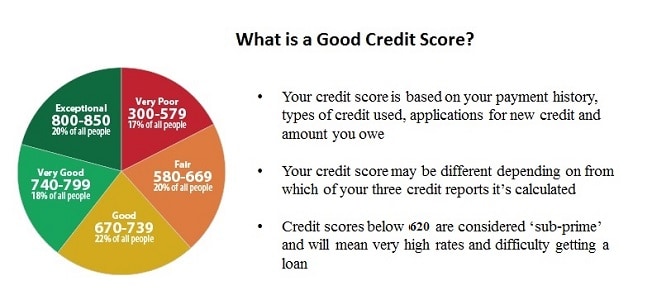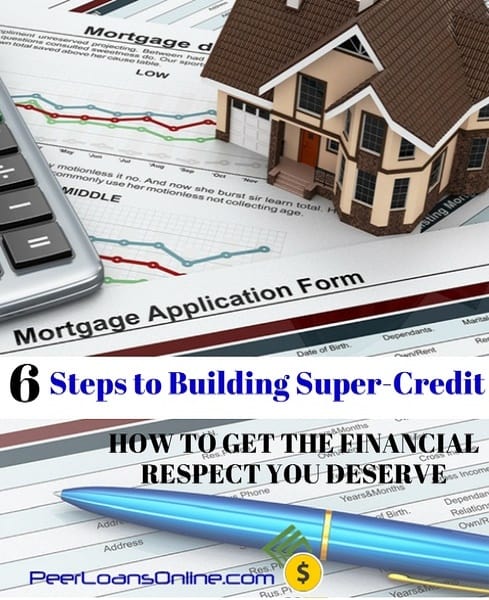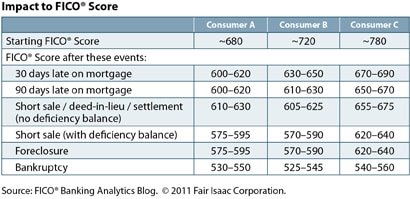These six steps for building credit will take you from a financial zero to credit hero and get the best rates on any loan
Building credit is something like a chicken-and-egg situation. Without a loan or a credit card, it’s hard to build a credit history.
Without a credit history, it’s hard to qualify for a loan.
So how does someone start from scratch to build a credit score? Honest answer: By starting at the bottom and beginning the long upward climb.
Started correctly though and your credit score will climb fast by building on-time payments and a solid credit report. After you’ve mapped a route, you need only follow a few basic guidelines to stay the course and build credit that will unlock lower rates on any type of loan.
I’ve put together a step-by-step plan for building a credit history along with some great tips from other personal finance experts.
Step 1: Understand what factors influence your credit score
These first two steps are simple. By simply reading this article, you can check them off the list.
Let’s start with how your credit—or FICO—score is calculated. Your credit score is affected by 5 credit factors:
- Payment History: Your payment history accounts for 35% of your credit score. The goal is to establish a record of full, on-time payments. Recent history is given more weight.
- Amounts Owed: Your debts account for 30% of your credit score. Credit bureaus look at both your total debt and your debt-to-credit-limit ratio. Not all debts are bad, but loads of credit card debt is definitely frowned upon.
- Length of Credit History: How much history you’ve already established accounts for 15% of your credit score. This can make it difficult for folks just starting out.
- New Credit: Recent credit acquisitions account for 10% of your credit score. New accounts are handled with suspicion.
- Types of credit used: The types of credit utilized account for 10% of your credit score. Non-revolving debt, the kind you get through loans that pay off over a set period, are better for your score because payments are more certain. Lenders see revolving debt, credit cards and other loans on which you can continuously borrow, as a problem because they can get out of control fast.
Step 2: Learn the guidelines for building credit
Lenders use your credit score to determine your financial trustworthiness. They’re more inclined to give money to people who will successfully pay it back. To prove your trustworthiness, you must demonstrate through example.
Here’s a list of simple guidelines to follow as you work your way up the ranks.
- Make payments on time. ALWAYS. This is the #1 rule of building credit. This applies to credit cards, loans, mortgages, everything.
Keep credit card debt low. Use your card regularly, but don’t spend money you don’t have.
- Stay well under your credit limit. You’ll be scored favorably if you keep below 30% of your total credit limit. To raise your limit, consider a no fee credit card.
- Don’t take out cash advances.
- Keep accounts open for as long as possible, especially if doing so is cost-free. This raises your average account age and your total credit limit.
- Don’t open too many new accounts all at once. This lowers your average account age.
- Check your credit report regularly and make sure everything is kosher. This won’t count against you.
- If possible, diversify the types of credit you utilize. Paying through installment loans will raise your score.
One of my favorite credit building hacks comes from Casey Fleming of The Loan Guide Blog.
Pay your credit card bills twice a month. Have the minimum amount due drawn from your checking account on the due date, and then make another payment 2 weeks later of whatever amount you can.
The scoring algorithms only “see” the number of on-time payments, so 6 months of on time payments turns into 12 as far as the scoring models. Plus, you'll never make a late payment, and you'll probably pay more toward your balance.
Step 3: Building Credit with No Credit History or Bad Credit
Now that you have an understanding of how your credit score is calculated and how to manage your spending, you’re ready to take action.
Finding a credit card or loan for which you qualify can be tricky if you have no credit history or bad credit. Getting a loan or a credit card with a decent rate will be tricky if your FICO score is below the 620 cutoff for prime borrowers.
If you’re starting at square one, you should know the difference between secured and unsecured credit cards. A secured credit card is for very limited credit and comes at no risk to the issuer.
When you’re approved, you’re required to make a deposit. The deposit is generally a couple hundred bucks and determines your credit limit. When you eventually close your account, the deposit is returned to you. Essentially, secured credit means you borrow money from yourself rather than a lender.
Step 4: Building on Your Credit Score
Once you’ve climbed to the next echelon of credit above a FICO score of 620 but below 690, you’ll start getting better loan offers and can even get some rewards cards.
Credit cards for ‘prime’ borrowers will come with other perks like free credit score monitoring. The company will track your FICO score and update you once a month if it rises or falls.
This plays into another credit building hack from Julie Rains of Investing to Thrive.
Keep an eye on your credit score through free services offered by your credit card company and consider the suggestions offered to boost your score. They might be simple like pay down debts without adding new debt or making sure payments reported to credit agencies are being made on time.
Before you rush out to apply for rewards cards, look closely at the interest rate and take a hard look at your spending habits.
- Rewards cards generally charge higher rates than other credit cards. You’ll pay more in interest than you really benefit on the rewards which usually amount to less than five percent. If you carry a balance on your cards then a lower rate card is probably better.
- Rewards cards also generally charge an annual fee. It might not be a big deal if you rack up and use a lot of points while paying your balance every month. If you’re not paying your balance every month, consider how much interest and the annual fee is costing you each year compared to your reward points.
Credit card companies are experts at getting you to overspend and run up interest fees. It’s worth hundreds of billions to them. Check out this post for the 5 Sneaky Ways Credit Card Companies Trick You.
Step 5: Reap the Rewards of Good Credit
With good credit, a FICO score of 700 to 770, come free rewards. By now, you should qualify for most credit cards and loans at the best published rate. Take your pick!
Just remember that it takes much less to ruin your credit score than it takes to build it.
FICO reports that being just 90 days late on your mortgage can force your credit score lower by as much as 130 points for people with good credit. A bankruptcy or foreclosure can lower your score by as much as 240 points.
Not only will one financial hiccup ruin your score but it can take as much as 10 years to build your credit back to the point you were previously.
People with excellent credit scores have farther to fall and missed payments or other mistakes lower their score more than those with a more checkered credit history.
Step 6: Take the Keys to the Kingdom with Super Credit
If you’ve made it this far, congratulations. A credit score above 800 FICO is rare indeed with only one-in-five Americans making it to that point.
Loan offers and credit card limits will still depend on your income and ability to pay back the debt but don’t settle for anything less than the lowest rates.
At this point, it’s all about protecting your credit score rather than building it. Unfortunately, there’s only one direction it can go. Consider a credit monitoring service like TransUnion to check your credit report more frequently than once a year and catch identity theft before it ruins your excellent credit history.
Building credit can be easy if you take it step-by-step but it does take a while. If you are just starting out with credit or have bad credit, get back on track and start increasing your score with on-time payments. Once you have better credit, demand the best rates from lenders but stay diligent in protecting your score.

 Keep credit card debt low. Use your card regularly, but don’t spend money you don’t have.
Keep credit card debt low. Use your card regularly, but don’t spend money you don’t have.
Leave a Reply